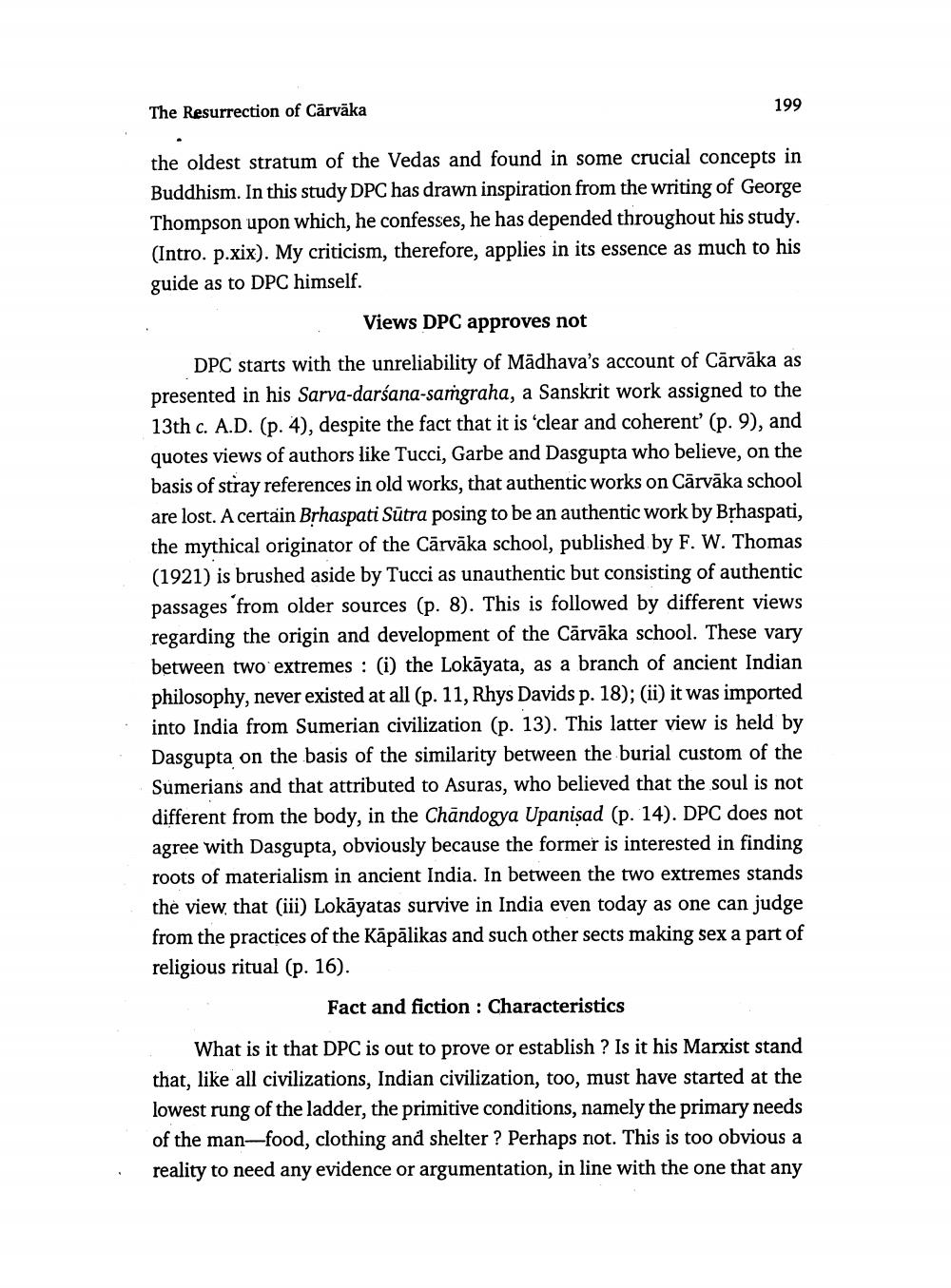________________
The Resurrection of Cārvāka
199
the oldest stratum of the Vedas and found in some crucial concepts in Buddhism. In this study DPC has drawn inspiration from the writing of George Thompson upon which, he confesses, he has depended throughout his study. (Intro. p.xix). My criticism, therefore, applies in its essence as much to his guide as to DPC himself.
Views DPC approves not
DPC starts with the unreliability of Mādhava's account of Cārvāka as presented in his Sarva-darśana-saṁgraha, a Sanskrit work assigned to the 13th c. A.D. (p. 4), despite the fact that it is 'clear and coherent' (p. 9), and quotes views of authors like Tucci, Garbe and Dasgupta who believe, on the basis of stray references in old works, that authentic works on Cārvāka school are lost. A certain Brhaspati Sūtra posing to be an authentic work by Brhaspati, the mythical originator of the Cārvāka school, published by F. W. Thomas (1921) is brushed aside by Tucci as unauthentic but consisting of authentic passages from older sources (p. 8). This is followed by different views regarding the origin and development of the Cārvāka school. These vary between two extremes : (i) the Lokāyata, as a branch of ancient Indian philosophy, never existed at all (p. 11, Rhys Davids p. 18); (ii) it was imported into India from Sumerian civilization (p. 13). This latter view is held by Dasgupta on the basis of the similarity between the burial custom of the Sumerians and that attributed to Asuras, who believed that the soul is not different from the body, in the Chandogya Upanisad (p. 14). DPC does not agree with Dasgupta, obviously because the former is interested in finding roots of materialism in ancient India. In between the two extremes stands the view that (iii) Lokāyatas survive in India even today as one can judge from the practices of the Kāpālikas and such other sects making sex a part of religious ritual (p. 16).
Fact and fiction : Characteristics
What is it that DPC is out to prove or establish? Is it his Marxist stand that, like all civilizations, Indian civilization, too, must have started at the lowest rung of the ladder, the primitive conditions, namely the primary needs of the man-food, clothing and shelter ? Perhaps not. This is too obvious a reality to need any evidence or argumentation, in line with the one that any




